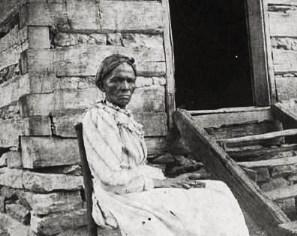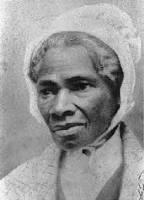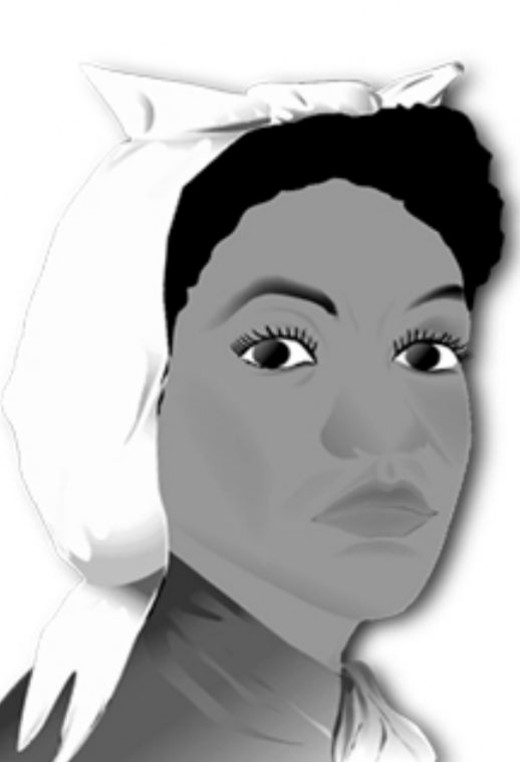African American Nurses in the Civil War Nursing was not a woman’s job before the Civil War, but by 1865, there were over 3,000 nurses serving the Union and Confederacy. In the North, most women nurses worked in military hospitals. Image: Black nurses with the 13th Massachusetts Infantry The 13th Mass fought in numerous battles, from the Shenandoah Valley to Bull Run to Antietam So many women volunteered as Union nurses that the U.S. government hired Dorothea Dix to serve as the superintendent of women nurses. African American nurses were not included in those numbers, nor were they recognized for their service for decades to come. Some were paid; many volunteered. During the Civil War, black women did serve as…
Category: African Americans
Caroline Le Count
Leader in the Integration of Philadelphia Streetcars An undertaker’s daughter, Caroline Le Count outscored all the boys in her class, struck up a correspondence with a Union army general, became only the second black woman named principal of a Philadelphia public school, and put her body on the line in the battle to integrate the streetcars. Soon she was noticed on the arm of a fellow activist, Octavius Catto. Image: The streetcar shown here at Sixth and Jackson Street demonstrates how streetcars typically operated with two horses, a driver and a conductor. The first horse-drawn streetcars in Philadelphia began operating January 20, 1858. They moved along a set of steel rails, which provided a smoother ride at faster speeds, regardless…

Women Slaves in Colonial Virginia
Women Slaves in the Colony of Virginia Slavery is a civil relationship in which one person has absolute power over the fortune, life and liberty of another. Chattel slavery further defines that relationship with the added dimension of ownership as personal property (chattel), in which the chattel can be bought and sold as if they were commodities. Chattel slavery was legal in the American colonies from the mid-17th century to the end of the Civil War in 1865. A slave is a human being who is forced to obey the commands of others, and to work for nothing. A chattel slave is an enslaved person who is owned forever and whose children and children’s children are automatically enslaved as well….
Port Royal Experiment
The U.S. Government and the Sea Island Slaves Backstory In August 1861, at Fortress Monroe in Virginia, Union General Benjamin Butler declared that the slaves who escaped and came into his lines for protection were contraband of war, a term commonly used thereafter to describe this new status of slaves, which meant that the Army would not return escaped slaves to their masters. This would set the stage for a much larger undertaking at Port Royal a few months later. Image: The Sea Islands during the Civil War The Military On November 7, 1861, just seven months after the Civil War began, the largest fleet ever assembled by the U. S. Navy, under the command of Commodore Samuel Du Pont,…
Harriet Powers
African American Folk Artist in the South Harriet Powers is one of the best African American quilt makers in the South in the Civil War era. Although only two of her older quilts have survived, she is now nationally recognized. Using the applique technique, Powers told stories with her quilts, depicting scenes from the Bible and events in American history. Harriet Powers’ Bible Quilt (1886) Eleven scenes from Bible stories Patchwork and applique Early Years Harriet Powers was born a slave on October 29, 1837 near Athens, Georgia, and was raised as a slave. For most of her life she lived in Clarke County, primarily in Sandy Creek and Buck Branch. Harriet was initially believed to be illiterate, but a…
African American Women in the Civil War
Black Heroines of the Civil War Susie King Taylor Born a slave in Savannah, Georgia in 1848, Susie King Taylor was 14 years old when the Union Army attacked nearby Fort Pulaski (April 1862). Taylor fled with her uncle’s family and other blacks to St. Simons Island, Georgia, where slaves were being liberated by the army. Since most blacks were illiterate, it was soon discovered that Taylor could read and write. Susie King Taylor Five days after her arrival, Commodore Louis Goldsborough offered Taylor books and supplies if she would establish a school on the island. She accepted the offer and became the first black teacher to openly instruct African Americans in Georgia. By day she taught children and at…
African American Women Spies
Black Women Intelligence Agents in the Civil War Other than a very few famous African American women spies, little is known about the black women who gathered intelligence for the Union during the Civil War. We do know that some were former slaves and others were free women who volunteered to spy on the Confederacy, often at great risk to their own personal safety. Image: Unidentified African American Woman Escaped slaves served as a primary source of intelligence for the Union Army. Throughout the official records of the war, however, there are frequent references to bits of intelligence coming from contrabands, a term that dates back to early 1861 at Fort Monroe, Virginia. General Benjamin Butler refused to return three…

Sojourner Truth
Sojourner Truth was an African American abolitionist and women’s rights activist who escaped from slavery in New York in 1826. She began as an itinerant preacher and became a nationally known advocate for equality and justice, sponsoring a variety of social reforms, including women’s property rights, universal suffrage and prison reform. She was born Isabella Baumfree in 1797 on the estate of Colonel Johannes Hardenbergh in Swartekill, a Dutch settlement in upstate New York. She was one of 13 children born to Elizabeth and James Baumfree, who were slaves on the Hardenbergh plantation. Both the Baumfrees and the Hardenberghs spoke Dutch in their daily lives. After the colonel’s death, ownership of the Baumfrees passed to his son Charles.

Maria Stewart
First African American Woman to Lecture in Public Maria Stewart was an essayist, lecturer, abolitionist and women’s rights activist. She was the earliest known American woman to lecture in public on political issues. Stewart is known for four powerful speeches she delivered in Boston in the early 1830s – a time when no woman, black or white, dared to address an audience from a public platform. Childhood and Early Years She was born free as Maria Miller in 1803 in Hartford, Connecticut. All that is known about her parents is their surname, Miller. At the age of five, she lost both her parents and was forced to become a servant in the household of a white clergyman. She lived with…
Charlotte Ray
First African American Woman Lawyer Not only was Charlotte Ray the first African American woman lawyer in the United States, she was one of the first women to practice in the District of Columbia and the third American woman of any race to earn a law degree (Howard University Law School, 1872). Charlotte E. Ray was born in New York City on January 13, 1850 to Charlotte and Reverend Charles Bennett Ray. She had six siblings, including two sisters, Cordelia and Florence. Reverend Ray was an important figure in the abolitionist movement and edited a paper called The Colored American. Education was important to the Rays, and all of their girls went to college. Shortly after the end of the…